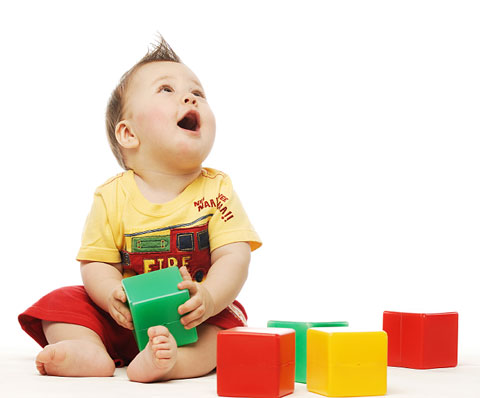Children learn many things by playing with blocks. Spatial and mathematical thinking are important understandings that children build through block play. As children build, they gain hands-on experience with concepts of proportions and balance. They explore shapes. As they talk about the blocks they are handling, they learn about the two-dimensional shapes on the surfaces of blocks and the three-dimensional forms that blocks represent, such as cylinders, prisms, and cubes. As they build, they learn to organize things by relative size, color, weight, and form.
Natural and human-built structures fill the world. Young children notice the shapes and designs of these built structures all around them. Perhaps you have been on a walk or car ride and heard a preschooler commenting on very tall built structures such as a skyscraper, a spikey fence, or a twisty slide on a playground. Children notice bird nests, hills, lakes, rivers, and other natural structures. Then, you may have seen that child attempting to re-create that structure with wooden blocks, plastic bricks, or even rocks on the playground. Blocks are a valuable tool that allow children to represent their world and share their understandings with peers and caregivers.
Block play also is an opportunity for children to develop skills across developmental domains, prompting them to use their language, social, and emotional skills. During block play, children have opportunities to communicate and collaborate with peers. Children can share ideas and work together to build large structures. Children negotiate sharing resources. They may work out exchanges of various shapes or problem solve how to build their structure when a certain shape is in short supply. A child may need to manage her emotions and frustration when another child knocks down her structure.
Do you want to keep your young learners busy with blocks? Here are some ideas to help make block play a richer and more inclusive opportunity for diverse learners.
- Organize your space: Provide a variety of types of building blocks and add picture and word labels to help children find and put away blocks in an organized manner. This will help them find the shapes of blocks they need for their structures as well as learn the vocabulary to talk about structures such as arch, pillar, unit, and double unit.
- Add loose parts: Adding other items to blocks inspires children to play with blocks in new ways. Scarves can become canopies, tissue boxes can become beds, twigs might encourage children to create a small forest. Small pieces of paper and tape can be used to create signs and symbols to enhance block creations. (Be sure to choose objects appropriate for the age of the children in your setting to avoid choking hazards.)
- Encourage dramatic play: Adding toy animals, people, or vehicles to your block play can encourage children to create stories. Clothespins and cardboard can be used to make simple stand-up people. You might also tape the photos of the children in your classroom or people in your family to blocks so they can become characters your block play.
- Allow structures to remain standing: If your space allows, let children keep their structures standing instead of putting them away immediately. You might encourage children to write a sign with the word “save” by their structure so they can continue to work on it later.
- Incorporate technology: Help children use a video camera, digital camera, or other recording device to document their creations. You can interview the children and ask them to describe their structures. Try rebuilding a previous creation or creating a diagram that shows the design of a structure you built.
Build, break down, and build again! For more ideas and information to help you get your young learners busy with blocks, check out the resources from the Illinois Early Learning Project website.

Rebecca Swartz
Dr. Rebecca Swartz is an assistant professor in the Department of Teaching and Learning at Southern Illinois University Edwardsville. She teaches courses in the early childhood education program including courses on early language and literacy, early mathematics, and collaboration with families. Prior to coming to SIUE she was an early learning specialist on state early childhood projects in the Department of Special Education at the University of Illinois at Urbana-Champaign.
Biography current as of 2022
IEL Resources
- Tip Sheet: Make Room for Blocks!
- Resource List: Block Play
- Videos:


